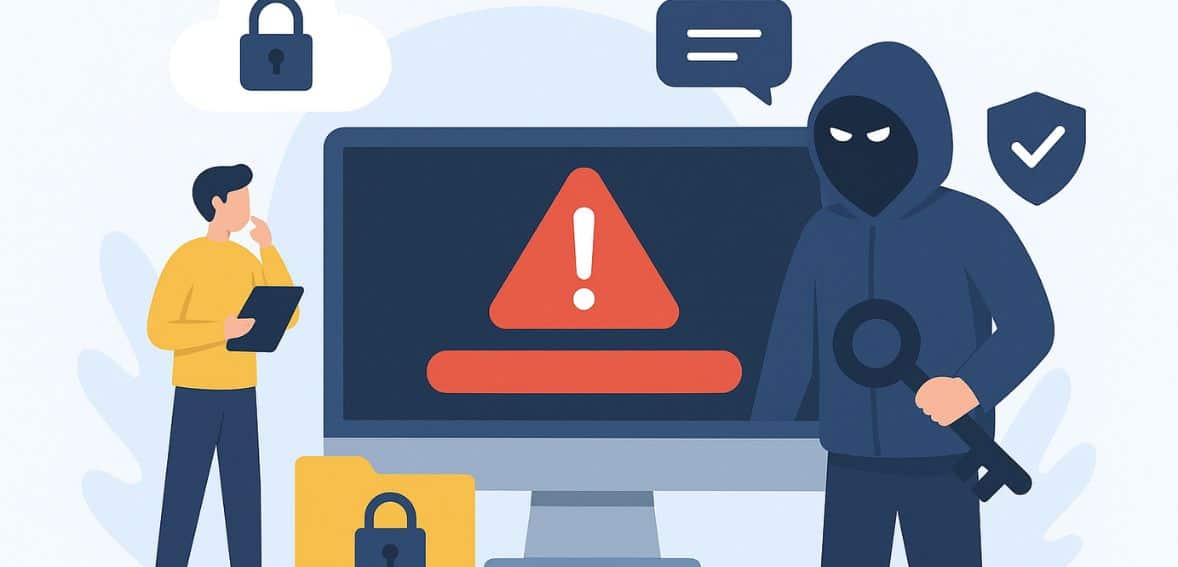
By carlislemerchantservices August 12, 2025
A payment data breach can feel like a business owner’s worst nightmare—sudden, disruptive, and deeply damaging to both trust and operations. In a matter of moments, sensitive customer information can fall into the wrong hands, sparking financial loss, legal scrutiny, and reputational harm. For high-stakes situations like this, time is your most valuable asset.
How you respond in the critical hours following a breach can determine whether you recover swiftly or face long-term consequences. This article outlines the essential steps you must take immediately, helping you protect your customers, safeguard your systems, and begin the journey toward restoring confidence.
Understanding the Immediate Impact of a Payment Data Breach

A payment data breach can happen like a sudden lightning storm in the connected digital economy—unexpected, disruptive, and potentially devastating. Your company may be running smoothly and processing transactions without any problems one minute, and then you may have to deal with the disturbing possibility that customer payment information may have been compromised.
This is a crisis that risks trust, brand reputation, and even the ability to operate for many merchants; it’s not just a technical issue. There may be a significant emotional and financial cost. Consumers start to wonder if they can safely make another purchase from you. Regulatory bodies may knock and request compliance reports and explanations.
The media may exaggerate the situation, making damage control more difficult, as they are eager to report on security-related mishaps. You have a very short window of time to respond effectively, and what you do in those initial hours and days will determine whether you recover or deteriorate. There is no need to panic or rush to fix security flaws without a plan when recovering from a payment data breach.
It involves taking a clear, decisive approach that minimizes the harm, protects your systems, wins back customer trust, and guarantees that all legal requirements are met. While no one wants to be in this situation, knowing exactly how to respond can make the difference between a temporary setback and a permanent scar on your business.
Understanding the Nature of the Breach

You need to know what you’re dealing with before you can react appropriately. The extent and complexity of payment data breaches can vary. Some entail a phishing attack on an employee account that compromises only a small portion of customer records. Others might be much more serious, like a complete system hack that gives hackers real-time access to your card information.
Determining how the breach occurred, what data was accessed, and whether it is still ongoing are all necessary to understand it. This entails hiring a skilled forensic investigator or collaborating closely with your cybersecurity and IT departments.
You must exercise caution in the early hours to avoid destroying important evidence by quickly shutting down systems without a plan. Every log file, every indication of malicious code, and every anomaly could be crucial in stopping the leak and giving authorities proof.
Your ability to contain the breach will increase with the speed and accuracy of your understanding of it. The goals of this preliminary inquiry should be to map out the attack’s timeline, find any vulnerabilities, and ascertain whether private data like billing addresses, credit card numbers, and customer names has been compromised. Any additional action could be misguided in the absence of clarity at this point.
Containing the Damage
Stopping additional data loss becomes the top priority once you have a clear picture of the breach. The type of attack determines the containment strategies. Payment processing may occasionally need to be temporarily halted until the compromised systems are isolated and secured. While the impacted servers are taken offline, larger businesses may need to reroute transactions through a secure backup system.
The goal of containment is to stop the immediate threat in order to prevent further damage; it is not the same as recovery. This could entail applying emergency security patches, removing access rights for compromised accounts, or altering system passwords. If third-party tool integrations seem to have been the point of entry, you might also need to disable them.
In today’s payment landscape, breaches frequently take advantage of several vulnerabilities at once. For example, employee credentials that were stolen may have been combined with malware that was installed on a point-of-sale terminal. This indicates that containment requires a concerted effort from technology, procedure, and human response and is rarely accomplished by a single action.
Notifying Key Stakeholders

Following a payment breach, remaining silent can be just as harmful as the breach itself. Those with a stake in the situation must be informed as soon as the first containment measures are in place. This covers your payment processor, your acquiring bank, and frequently the card networks such as Mastercard or Visa. These organizations may offer advice or even help in securing your systems, and they have procedures for handling compromised data .
Notifying your insurance company and, if applicable, legal counsel is equally important. Strict guidelines regarding the timing and manner of reporting breaches are frequently included in cybersecurity insurance policies. If you miss those deadlines, your coverage may be void, and you will be responsible for paying for the consequences yourself.
You will probably be required by law to alert regulatory agencies if the breach is serious and involves personally identifiable information. This notification has to be made within 72 hours in some jurisdictions. It is legally required that you understand and abide by these requirements to shield your company from additional fines.
Communicating with Customers
It’s never easy to inform your customers that their payment information may have been compromised. It can be tempting to postpone the announcement to learn more or lessen the impact, but doing so runs the risk of further undermining confidence. Consumers appreciate openness, particularly when it affects their financial stability.
Clear, factual, and comforting are the hallmarks of a well-written customer communication. It should outline the events, the data that might have been compromised, the steps you are taking to fix the problem, and self-defense tips. Giving them practical help, like free credit monitoring or help replacing their card, shows that you care about their safety .
Just as crucial as the content is the tone you employ. Steer clear of technical terms that your clients might not understand. Instead, focus on responsibility and empathy. Making them feel informed, encouraged, and assured that you are acting decisively is the aim.
Conducting a Comprehensive Security Audit

A more thorough analysis of your payment infrastructure is essential after the immediate threat has been eliminated. A thorough audit finds additional flaws that could be exploited in the future, in addition to the vulnerabilities that caused the breach. Every element of your payment ecosystem, including backend databases, payment gateways, and point-of-sale hardware, should be assessed during this process.
Finding that a breach took advantage of a series of weaknesses, like out-of-date software and inadequate access controls, is not unusual. Your compliance with the PCI compliance requirements should also be evaluated during the audit.
A breach may result in required compliance reviews for high-volume retailers; if these are not completed, there may be severe penalties or even the inability to accept card payments. You can win back the confidence of both customers and regulators by taking proactive measures to resolve these problems.
Strengthening Defenses for the Future
A breach can be a turning point, but it can also teach you a painful lesson. You have the chance to reconstruct your payment systems with security at their core after the damage has been repaired. Stronger authentication procedures for system access, the use of sophisticated fraud detection tools, or the implementation of tokenization or end-to-end encryption to safeguard card data could all be part of this.
It’s equally critical to train staff members to spot phishing attempts and handle payments securely. Human error, not just technical faults, is the cause of many breaches. A savvy group can act as a strong defense against such assaults in the future.
Some businesses also choose to work with managed security service providers, who monitor systems in real time and respond immediately to suspicious activity. While this represents an ongoing investment, it can be far less costly than dealing with another breach—especially when combined with a clear understanding of payment reversal processes to manage disputed transactions swiftly.
Rebuilding Customer Trust

It takes time to rebuild your reputation following a payment data breach. Naturally, customers who have been the victims of fraud or identity theft will be wary of going back. Nonetheless, confidence can be progressively restored through persistent openness and noticeable advancements.
Provide updates on the security improvements you’ve implemented. Continue to assist impacted clients. Keep the lines of communication open via social media and customer support. The stigma can gradually be reduced by proving that you have taken proactive measures to safeguard consumer data and have learned from the breach.
Being accountable is another aspect of restoring trust. Recognize the breach and describe the steps taken to prevent a recurrence if it was caused by negligence, such as neglecting to install necessary software updates. Consumers are more tolerant of companies that take responsibility for their errors than those that try to avoid responsibility.
Conclusion
One of the most difficult situations a company can encounter is a payment data breach, but it need not spell disaster. Your immediate and long-term response will be crucial. You can transform a potentially disastrous incident into a transformative moment by quickly identifying and containing the breach, alerting the appropriate parties, being transparent with customers, and fortifying your defenses.
Rebuilding relationships and the trust that drives your company are just as important as technical fixes on the road to recovery. Security is now a fundamental component of your brand promise, not just an IT concern. Customers are reassured that their trust in you is well-placed by every action you take to protect payment information.